Carmakers are bringing humanoids onto the factory floor and using the latest software to help them function and learn in complex lineside environments.
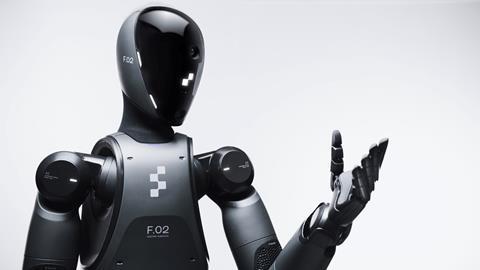
Carmakers including Audi, BMW and Mercedes-Benz are exploring the use of humanoid robotics for lineside logistics, backed up by the latest digital technology, including artificial intelligence (AI) and machine learning. The robots are being tested as part of a wider drive to automation in vehicle manufacturing and logistics. Humanoid robots offer greater flexibility and dexterity to the performance of repetitive and laborious lineside or warehouse tasks. They can also operate in environments already designed for humans.
Audi started assembly in the battery electric vehicles (BEVs) with its Chinese partner FAW at the end of 2024 at a plant in Changchun, China. Audi FAW NEV is making the BEVs, starting with Q6L e-tron, based on the compact Premium Platform Electric (PPE) model, which Audi developed with Porsche.
The Changchun production plant has an installed annual production capacity of over 150,000 BEVs and also produces the batteries for the vehicles. The production system is fully automated and digitalised, having been designed with digital twin technology. Day-to-day manufacturing and logistics is also digitalised with all processes (including maintenance) networked with each other via one single IT architecture using the S/4Hana cloud-based data system to store and share information throughout the plant.
The Changchun body shop is automated with 800 robots, quality control is managed with visual recognition technology and there is an automated crane in the press shop to streamline operations. Audi and FAW are using a driverless transport system and a 24-metre-high warehouse that uses a fully automated storage and retrieval system.
Process acceleration
The carmakers are also exploring the use of humanoid robots on the assembly line. Audi FAW NEV has a memorandum of understanding (MoU) with the Beijing Innovation Center of Humanoid Robotics and UBtech Robotics to further explore the use of the technology.
“Technology helps amplify the synergies between the teams from Germany and China,” said Helmut Stettner, CEO of Audi FAW NEV in December. “It also enables us to be fast and highly efficient and speed up processes – both during construction and in day-to day-operation. We create an ideal synergy between our highly skilled workforce and cutting-edge technology at the site.”
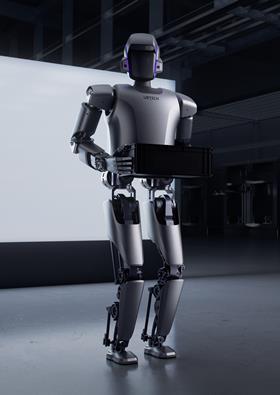
At last November’s Automotive Logistics and Supply Chain Mexico conference, Dieter Braun, head of supply chain at Audi, outlined how the transition to BEV making necessitated a more flexible approach to sustainable manufacturing which involves embracing new technologies such as automation and applying those technologies quickly, measuring the results and using them to stay competitive.
One of Audi’s guiding principles is to push the limits of innovative and sustainable production, according to Braun. That involves embracing new technologies such as automation and applying those technologies quickly, measuring the results and using them to stay competitive.
As part of its comprehensive Factory360 strategy for production and logistics, Braun reiterated Audi’s guiding maxim that it is pushing the limits of innovative and sustainable production. Braun said that over the last five years a lot of new technology has come to market, such as those used in factory and warehouse automation.
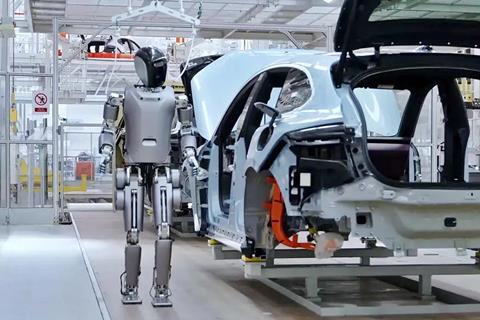
Chinese carmaker Nio is also using a humanoid robot called Walker S, supplied by UBTech Robotics, for assembly lineside tasks ranging from quality inspections of door locks and seat belts to affixing vehicle logos. A spokesperson for Nio confirmed that it has been conducting tests on humanoid robots for optimal performance since the beginning of this year in its manufacturing base in Hefei, Anhui province. According to Nio the tests show that the robots still need a lot of training.
Apollo mission at Mercedes-Benz
Mercedes-Benz Group has also been trialling humanoid robotics at is Kecskemét plant in Hungary to bring parts to the production line for workers to assemble and to carry out inspection of components. The robots were also used to deliver the totes of kitted parts later in the manufacturing process, according to the carmaker. Mercedes-Benz has been working with robotics supplier Apptronik on the potential applications of its Apollo robots.
Apptronik is a spin-off from the Human Centered Robotics Lab at the University of Texas (in Austin) and its work led to the development of Apollo, an advanced humanoid robot. Apollo is designed with the versatility to carry out tasks alongside humans in manufacturing settings. It is able to carry out kitting tasks in manufacturing settings, which require dextrous movement to handle smaller items and knowledge of how to sort and distribute parts.
The Apollo robots are around 1.7 metres tall and weigh 72.5kg with the ability to lift around 25kg. Apptronik said they are built to operate in industrial spaces alongside people which means companies are able to avoid full-scale facility redesigns that are built around robots rather than people. The robots are equipped with “force control architecture”, which means they are safe to work alongside workers and undertake physically demanding jobs in a similar way to collaborative robots (cobots).
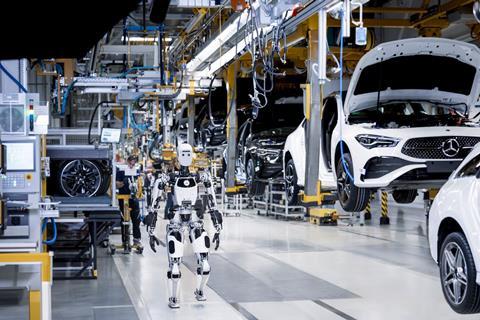
“We are exploring new possibilities with the use of robotics to support our skilled workforce in manufacturing,” said Jörg Burzer, head of production, quality and supply chain management at Mercedes-Benz Group during the trials. “This is a new frontier and we want to understand the potential both for robotics and automotive manufacturing to fill labour gaps in areas such as low skill, repetitive and physically demanding work and to free up our highly skilled team members on the line to build the world’s most desirable cars.”
Apptronik said that Apollo’s computing power makes it possible for leading AI companies to solve use cases outside the ones that Apptronik will initially solve, similar to the iPhone concept: “world-class, user-friendly hardware that comes with some pre-built applications and can add applications developed by third parties”.
When Mercedes-Benz set up the agreement with Apptronik, the robot makers’ co-founder and CEO Jeff Cardenas said it was the realisation of a “dream scenario” when the company first set out to build the Apollo humanoid. “Mercedes plans to use robotics and Apollo for automating some low skill, physically challenging, manual labour – a model use case which we’ll see other organisations replicate in the months and years to come.”
We will be discussing robotics for lineside logistics operations, advanced AI technology and its uses in automotive supply chains and the use of hyperautomation within digital supply chains to meet the needs of complex demand forecasting and beyond in our upcoming event, Automotive Logistics and Supply Chain Digital Strategies North America.
The event, now in its second year, will take place from 9-10 June in the Country Music Hall of Fame, Nashville, TN.
Mercedes-Benz told Automotive Logistics that advances in robotics and AI open up new opportunities for the carmaker. “The Mercedes-Benz manufacturing USP is intelligence – it helps to manage complexity and increases flexibility,” said a spokesperson for the carmaker. “This is why Mercedes-Benz is increasing the use of AI and advanced robotics. Mercedes-Benz is a pioneer in advanced manufacturing.”
The carmaker will be making further announcements about its humanoid robotics applications from Munich in March this year.
Distribution and beyond
Apptronik is also conducting an early proof-of-concept programme with logistics provider GXO. The companies are evaluating the overall performance of the robot in a lab setting to further fine-tune Apptronik’s AI model before deploying the technology to a US distribution centre.
On February 14 this year, Apptronik announced it had secured $350m to advance its humanoid robotic technology. Apptronik said the funding, which is co-led by B Capital and Capital Factory, with participation from Google, marks a pivotal moment for the company, fuelling the deployment of the Apollo robot while enabling the company to scale operations, accelerate innovation, and grow its world-class team to meet the surging demand for next-generation, AI-powered humanoid robots. That demand is coming from a range of sectors, including automotive, electronics manufacturing, third-party logistics providers, according to the company.
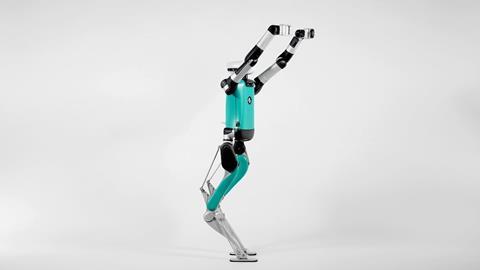
Digit from Agility
Schaeffler Technologies, which makes bearings for automotive applications, has invested in Agility Robotics, which makes the Digit bipedal robot. Schaeffler said it intends to purchase humanoid robots from Agility Robotics for use across the whole global Schaeffler plant network.
“In disruptive times, implementing innovative manufacturing solutions is crucial to be successful,” says Andreas Schick, Schaeffler’s chief operating officer. “Here, humanoids play an important role. We, at Schaeffler, will integrate this technology into our operations and see the potential to deploy a significant number of humanoids in our global network of 100 plants by 2030. We look forward to the collaboration with Agility Robotics which will accelerate our activities in this field.”
Agility is already supplying humanoid robots to GXO Logistics following a multi-year agreement signed last year.
BMW go Figure
Last year BMW was also carrying out trials using humanoid robotics at its US plant in Spartanburg, South Carolina. Working with humanoid robotics developer Figure, BMW was using the Figure 02 robot to insert sheet metal parts into specific fixtures, which were then assembled as part of the vehicle chassis. The trial involved looking at how the robot can save employees from having to perform laborious tasks and do so in a safe environment.
“The developments in the field of robotics are very promising,” said Milan Nedeljković, head of production at BMW, at the time of the trials. “With an early test operation, we are now determining possible applications for humanoid robots in production. We want to accompany this technology from development to industrialisation,” he said.
Currently, there are no Figure AI robots at BMW Group Plant Spartanburg, and there is no definite timetable established for bringing Figure robots to the plant but BMW is looking at data capture and training options for lineside robotics. BMW said the trial gave it valuable knowledge of what requirements must be met to be able to integrate so-called multi-purpose robots in an existing production system. This includes how humanoid robots communicate with the system under real conditions.
Figure, which is based in California, said that its Figure 02 humanoid robot is the world’s most advanced humanoid robot currently available on the market. Bi-pedal mobility and advanced dexterity means it is useful in areas with physically demanding, unsafe or repetitive processes, which the company said improves ergonomics and safety for factory workers.
Figure 02 has three times the processing power of its predecessor, improved voice communication, better cameras, microphones and sensors, a high-performance battery, and fourth-generation human-scale hands with 16 degrees of freedom per hand and human-equivalent strength.
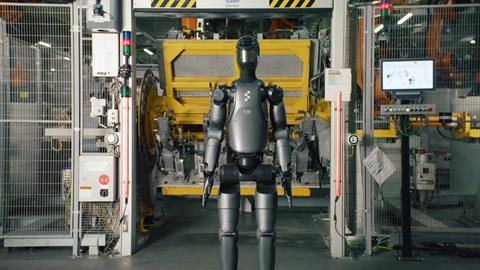
One robot and his dog
Boston Dynamics, which has been a leader on industrial robots for some time and is majority owned by Hyundai Group since 2021, released an electric version of its Atlas humanoid in 2024 (replacing the hydraulic version), which the company said is stronger, more dexterous and more agile. In October 2024 the company partnered with Toyota Research Institute to develop a general-purpose humanoid robot based using the Atlas hardware, equipped with AI.
Robotics applications are not restricted to bipedal applications at Boston Dynamics and quadrupeds are also being used, such as the Spot inspection robot. Spot takes measurements and readings from automotive manufacturing equipment for predictive maintenance purposes, thus helping to avoid costly downtime caused by unforeseen equipment failure.
The robot has autonomous mobility which is important in its effectiveness in automotive manufacturing facilities, according to Boston Dynamics. Spot has moving object detection to recognise whether a person or forklift is crossing its path. It also checks for traffic at crosswalks and safely crosses with its lights flashing to alert others of its presence. The autonomy system allows it to reroute itself if a particular pathway is blocked. It can choose an alternate route from one of its recorded pathways and go on to successfully complete its mission of collecting and recording data.
In 2024 Boston Dynamics started equipping its robots with new AI and machine learning tools, such as reinforcement learning and computer vision, enabling them to adapt efficiently to complex real-world situations, such as those on the factory floor. The company also launched its Orbit fleet management software, which provides a centralised platform to manage robot fleets, site maps and digital transformation data, with applications already available for Spot but with plans to integrate Atlas and the Stretch mobile warehouse robot.
The refinement of humanoid robotics offers a lot of potential for applications in the automotive manufacturing and logistics, and there are a number of direct applications coming up in 2025. That includes Tesla starting the use of its Optimus humanoid robot for applications at its manufacturing bases and GAC carrying out trials of humanoid robots across its car factories in China. GAC will begin small-scale production of the robots for internal use in 2026.






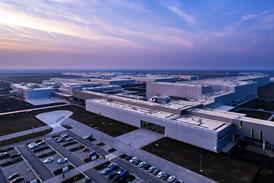





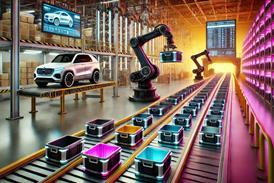
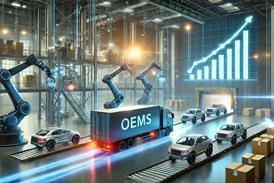










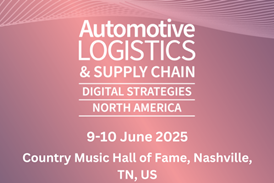
![Global[1]](https://d3n5uof8vony13.cloudfront.net/Pictures/web/a/d/s/global1_726550.svgz)
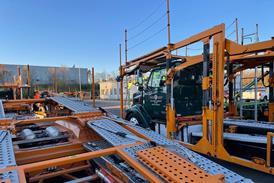
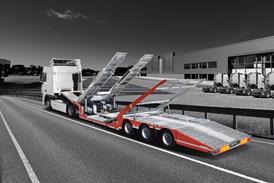
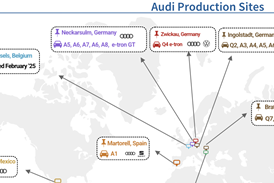

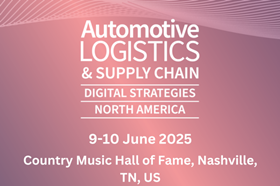
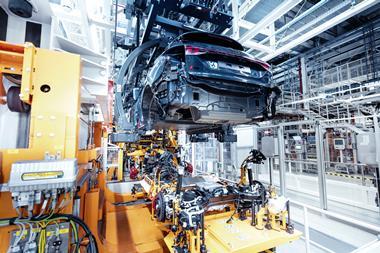








No comments yet